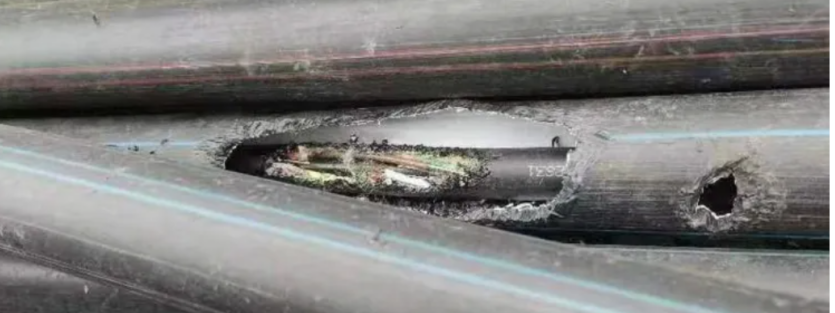3 TYPES OF ANTI RODENT FIBER OPTIC CABLE
Whether laying an overhead fiber cable in a forest area or laying optical cable along the high-speed or high-speed railway, these area often a place where rodents such as squirrels monkey, termite or mice. Rodents have the habit of grinding their teeth.
As the amount of optical cable laying increases, the interruption of fibers in fiber optical cables due to rodent chewing is becoming more and more, as shown in Figure 1. In order to prevent rodents from damaging optical cables, optical cables specifically designed to prevent rodent bites (hereinafter referred to as rodent-proof optical cables) are gradually being used


There are three main protection methods for anti-rodent optical cables:
The first is chemical stimulation. A spicy agent is added to the sheath of the optical cable. When a rodent bites the sheath of the optical cable, the spicy agent can strongly stimulate the oral mucosa and taste nerve of the rodent, causing the rodent to give up chewing. The chemical properties of the spicy agent are relatively stable, but when the optical cable is used in a long-term outdoor environment, the spicy agent will still gradually escape from the sheath due to factors such as water dissolution, making it difficult to ensure the long-term anti-rodent effect of the optical cable. Whats more, when production it is not friendly for the environment .
The second type is physical stimulation method. It is to add a layer of glass yarn or FRP (Fiber Reinforced Plastics) made of glass fiber between the inner sheath and the outer sheath of the optical cable, as shown in Figure 2. Because glass fiber is extremely thin and brittle, when rodents bite, the pulverized glass slag will injure the rodents’ mouths, making them fearful of optical cables. The physical stimulation method has a better anti-rodent effect, but the manufacturing cost of optical cables is high, and glass fibers can easily injure construction workers during optical cable construction. Since it does not contain metal components, optical cables can be used in strong electromagnetic environments.
The third type is the armor protection method. It is to set a hard metal reinforcement layer or armor layer (hereinafter collectively referred to as the armored layer) outside the cable core of the optical cable, making it difficult for rodents to bite through the armor layer, thereby achieving the purpose of protecting the cable core.
Metal armoring is a conventional manufacturing process for optical cables. The manufacturing cost of optical cables using the armor protection method is not much different from that of ordinary optical cables. Therefore, currently, rodent-proof optical cables mainly use the armor protection method.
In the next chapter we will discuss in detail how to choose armored rodent fiber optic cables
Post time: Jan-04-2024

